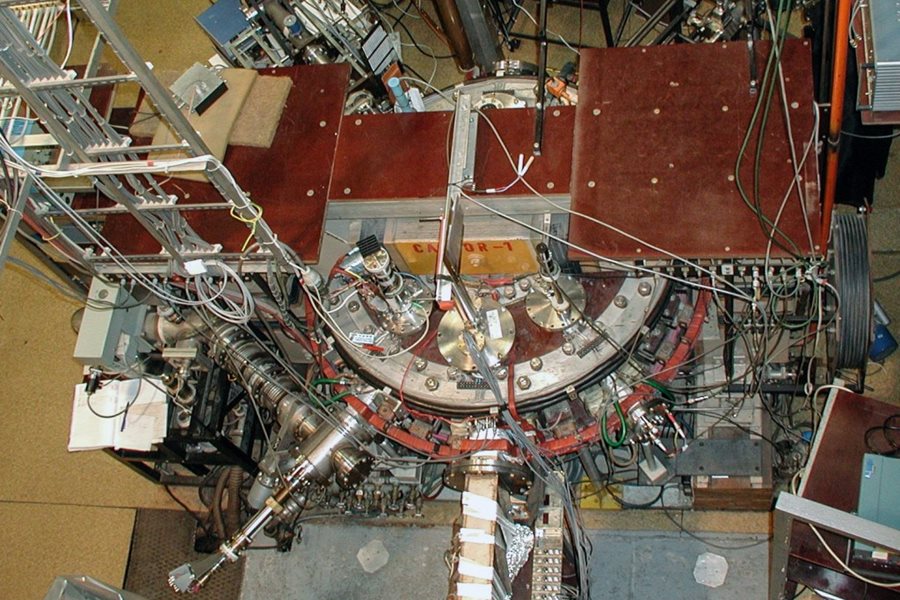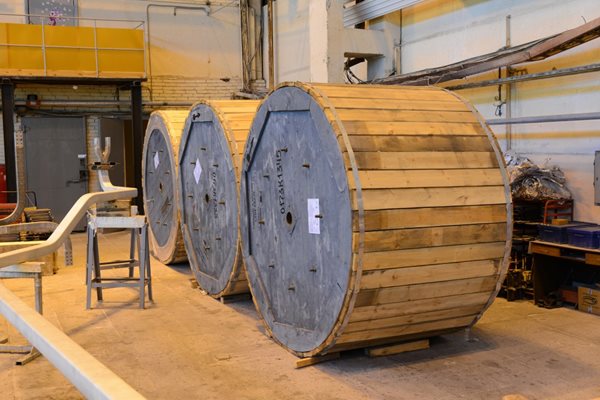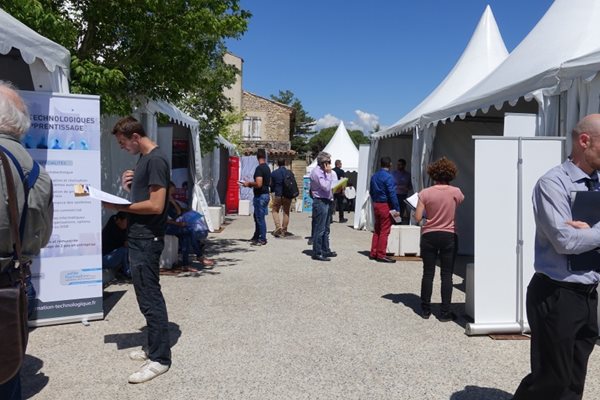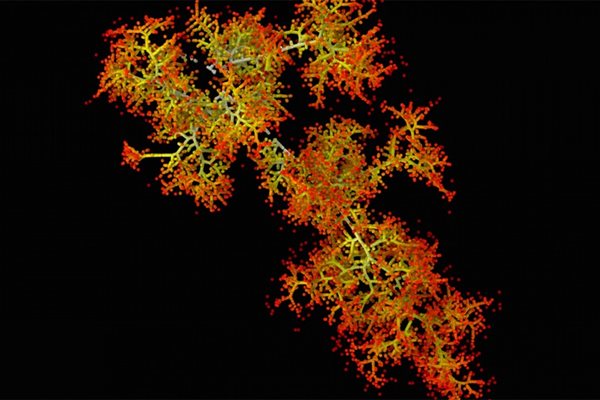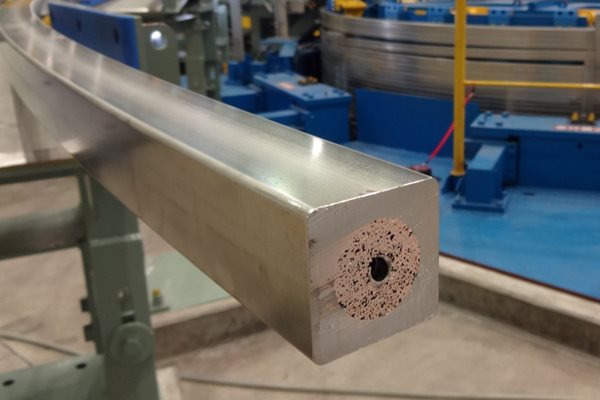
you're currently reading the news digest published from 11 Jun 2018 to 18 Jun 2018
featured4
of-interest3
press11
featured
Fusion machines | The second-hand market
Whatever their size, fusion devices are fine pieces of technology that are complex to design and expensive to build. As research progresses and experimental programs unfold, however, scientific institutions routinely feel the need for machines with additional capacities, up-to-date equipment or exotic features. When an upgrade is not possible the 'old' device appears on an unofficial 'second-hand market,' more often donated than sold—just like one might give away a perfectly functional but not-quite-cutting-edge computer to a nephew, a neighbour or a local association. Russia, which built and upgraded tokamaks at a very fast pace throughout the 1970s and 1980s, has been one of the most generous contributors to this second-hand market. In 1975, the Kurchatov Institute decommissioned an upgrade of TM-1—a machine that belonged to the early series of small tokamaks developed in the 1960s—and had it shipped to the Czech Academy of Science where it operated for some 30 years under the name CASTOR. (This grandfather of all tokamaks now serves educational purposes as GOLEM). The LIBTOR tokamak, installed since 1982 at Libya's Tajoura Nuclear Research Centre, is the rechristened TM4-4 machine, which operated at the Kurchatov Institute from 1969 to 1973. Components from another Russian machine—the larger T-7 (1979-1985) and the first to be equipped with superconducting toroidal field coils— have been reused in China's HT-7. A lesser known Russian machine, TVD, was handed over to Iran in 1994 where, in conformity with the long-standing tradition of giving fusion projects the name of mountains¹, it became Damavand, Iran's highest peak and a significant feature in Persian mythology. Giving away second -and fusion devices is a way of planting the seeds of fusion research in aspiring countries. Portugal for instance, has been operating a small tokamak named ISTTOK since 1990 that is based on a machine that began its career in 1974 at the Dutch institute FOM (now DIFFER) under the name TORTUR (!). In 1999 Brazil received the 20-year-old TCA tokamak from the Ecole polytechnique fédérale de Lausanne, in Switzerland. The device's French name (Tokamak à Chauffage Alfvèn) carries on in the Brazilian acronym TCABR (or TCA-Br). Brazil, which voiced interest in joining ITER in the late 2000s, also operates the NOVA-UNICAMP tokamak, which was the Nova II tokamak at Kyoto University, Japan, in a former life. As they progress in their research, former 'receivers' often become 'givers.' China for instance, after benefitting from Russian components for HT-7 and German components (from the original ASDEX) for HL-2A, gave away HT-6B (1982-1992) to Iran, now installed as IR-T1 at Azad University in Tehran. Nick Balshaw from the United Kingdom Atomic Energy Agency (UKAEA) tracks down 'all the world's tokamaks' as a hobby. He has listed more than a dozen machines (including stellarators) that have changed hands in their lifetime—and not just once. Take the present HIDRA (Hybrid Illinois Device for Research and Applications), which was transferred in 2014 from the Max Planck Institute of Plasma Physics (IPP) in Greifswald, Germany, to the University of Illinois in Urbana-Champaign. The device, which was described by Physics Today as 'a tokamak and stellarator rolled into one,' had seen the light of day 40 years earlier in Grenoble, France, as a joint German-French-Belgian project under the name 'Wendelstein Experiment in Grenoble for the Application of Radio Frequency Heating'—WEGA, in short. WEGA operated in Grenoble for about 10 years, was transferred in 1984 to the University of Stuttgart, Germany, and resumed operation at IPP in 2001—still under the WEGA acronym, but with the 'G' now standing for Greifswald and not Grenoble and the final 'A' for Ausbildung ('training') in German. By the end of 2013, as the latest incarnation of the Wendelstein project (Wendelstein 7-X) was nearing completion, WEGA was shut down and eventually sailed across the Atlantic. In sum, in over more than 40 years of existence the device has operated under four different roofs on two continents. In the second-hand market, fusion devices are handed over free of charge (except for transportation costs, which are generally paid by the receiver). There is however one example of a 'for sale' tag attached to a tokamak—and a hefty one at that. Canada entered fusion research in the late 1970s, and by 1986 the Canadian Centre for Fusion Magnetics (CCFM) operated an experimental tokamak in the Varennes suburb of Montreal. This medium-sized machine, named Tokamak de Varennes, specialized in the study of plasma-wall interactions, and for more than one decade formed the kernel of CCFM activity. Unfortunately, by 1997 the project had to be folded for lack of funding. CCFM was left with a perfectly operational machine on its hands, potentially worth millions of dollars, and it was ready to sell. Among the potential buyers was Iran, whose ambitious fusion research program had to rely on outdated machines. The Iranian offer was in the range of USD 50 to 90 million (depending on the sources). It would have been enthusiastically accepted if the diplomatic context had been different: Iran was at the time under US-imposed sanctions and even in Canadian government circles, there was reluctance to realize the transaction. The solution to the dilemma came from General Atomics: in order to upgrade its DIII-D tokamak, the company needed powerful gyrotrons ... of the kind, precisely, that equipped the Tokamak de Varennes. Amputating one of the heating systems from the machine considerably reduced its operational value and, as expected, Iran pulled out of the deal. As one final twist to the whole episode, the Tokamak de Varennes was transferred in 2001 to Canada's federal capital, Ottawa, where it now stands as one of the most spectacular exhibits at the Canada Science and Technology Museum — a unique example of a fusion machine on display for the general public. ¹ The tradition of giving the name of a mountain to a fusion research project originates with "Matterhorn", the secret program conducted at Princeton University in the 1950s. The choice reflected Lyman Spitzer's passion for mountaineering and called on the parallel between the difficulties of reaching the summit of a high peak and those of harnessing fusion energy. Several fusion projects have since been christened with mountain names—Wendelstein among them.
Manufacturing in China | A set of clamps to resist all loads
China is providing an extensive array of supports and clamps for ITER's superconducting magnet systems—in all, more than 1,600 tonnes of equipment. On 9 June, the first batch of U-shaped poloidal field clamps was on display, ready for shipment to ITER. Eighteen poloidal field magnet clamps—3.5 tonnes each—stand in orderly rows at Guizhou Aerospace Xinli Casting & Forging Co., Ltd. (HTXL) in Zunyi, Guizhou Province, China. These first-completed coil clamps will be sent to the European magnet winding facility at ITER, where they will be mounted directly on poloidal field coil #5 (PF5) at the end of the fabrication sequence. Spaced at equal distances around the superconducting winding pack, the role of the clamps is to support the weight of the coil (just under 350 tonnes) as well as to withstand the thermal loads during the cooling of the magnets and the alternating electromagnetic forces from the different magnet coils during the operation of the Tokamak. ITER's six poloidal field coils all require U-shaped clamps, but due to differences in coil width and height, not all the clamps are the same. During the initial qualification phase from 2010 to 2014, the main contractor to the Chinese Domestic Agency, SWIP (Southwestern Institute of Physics), asked three subcontractors to realize prototype clamps for poloidal field coil PF2, whose design is very similar to those needed for PF5. The most challenging manufacturing step for these three suppliers was the creation of a deep, but narrow slot on each "leg" of the U-shaped clamps (see the top photo in this article). These apertures are designed to ensure the strength and flexibility of the component, however at just 20 mm in width (+/-3 mm) for a slot as deep as 1 metre they are difficult to realize without introducing deformation or defect. Two of the suppliers relied on welding machined plates together to create these slots, but were unsuccessful in reaching the required technical specifications on their prototypes. A third, HTXL, devised an innovative solution that was successful. HTXL developed a creative forging and wire cutting technique that avoided welding-induced deformation while achieving strict dimensional tolerances and maintaining the excellent mechanical properties of the high-grade steel material. In the HTXL solution, a circular piece of metal is first forged around a clamp-shaped mold and then cut into two U-shaped forgings. Deep-hole drilling and wire-cutting is used to create the deep slots in the thick side plates, before the final products are machined to the required dimensions. Now, once final documentation is completed, the full set of 18 poloidal field coil clamps produced at HTXL will be shipped to the ITER site. Also included in the first shipment is the first toroidal field gravity support, and the first-of-series clamp supports for PF3 and PF4. The full scope of the magnet support Procurement Arrangement signed by China includes 18 toroidal field coil gravity supports; 18 coil clamps each for PF2, PF3, PF4 and PF5; 9 coil clamps each for PF1 and PF6; and supports for all 18 correction coils—more than 1,600 tonnes of equipment in all. As some of the first equipment needed on site for installation in the Tokamak Building, the on-time delivery of the material is particularly important.
Power electronics | Coaxial cables arrive from Russia
Thirty-eight reels of cable on 13 specially equipped trailers ... the recent convoy of electrotechnical equipment shipped by the Russian Domestic Agency was the largest yet to travel between Saint Petersburg and Marseille. Within the scope of Russian in-kind obligations to the ITER Project, the package of electrotechnical equipment that is under development for the power supply and protection systems of the superconducting magnets is among the most complex and most expensive. Comprising switching equipment, busbars and energy absorbing resistors, the package is under the responsibility of the Efremov Institute, main contractor to the Russian Domestic Agency. Recently, 22 kilometres of coaxial cable (225 tonnes) was delivered on 38 reels. Coaxial cables, which connect the switching devices with the energy-absorbing resistors, are part of the safety-important fast discharge units that are designed to protect the superconducting coils in the case of a sudden loss of superconductivity (a quench). This presupposes special requirements for their fabrication, testing and transportation, which were respected.
Conference | Lions and mammoths and cave bears—oh my!
Separated by less than 200 kilometres in space—but by 36,000 years in time—the ITER Tokamak and the Chauvet Cave may seem to have little in common. But to science journalist Pedro Lima, there is a close similarity: each represents the apex of human imagination, ingenuity, and technology advancement at a given point in civilization. Last week, Mr. Lima came to ITER to speak about his work. The Chauvet Cave—discovered in 1994 and named after one of its discoverers, Jean-Marie Chauvet—is located near the village Vallon-Pont-d'Arc to the northwest of ITER. Situated on a limestone cliff above the river in the Gorges de l'Ardèche, the 400-meter-long cave contains some of the best-preserved figurative cave paintings in the world. Packs of lions, countless mammoths and woolly rhinoceroses, bears and herds of horses filled the screen in Mr. Lima's presentation. The Chauvet Cave features hundreds of paintings in red ochre, black charcoal or white scratchings, depicting 13 different animal species with such astounding artistic perfection that they seem to come to life. Scientists have identified an impressive array of techniques including drawing, blowing, brushing, engraving, finger tracing and stomping, some of which are rarely found in other cave art. 'According to prehistorians,' Mr. Lima says, 'homo sapiens went through an explosion of innovation about forty thousand years ago. It is shown in both art and technology.' As his presentation showed, the cave artists had perfected the use of perspective and three-dimensional representation. In one scene a bison has eight legs; in another, a rhinoceros has multiple parallel horns; this was a way of adding drama, by showing the animal in motion. The significance of the cave for the early artists and their Aurignacian culture is still a point of debate among scientists. The animals portrayed on the cave walls, which also include aurochs, panthers, bears, bison and hyenas, were clearly held in special regard. They were not human prey: for the hunters and gatherers who frequented this place, the normal diet was reindeer, and there are no reindeer drawings. These and other aspects of the drawings have led researchers to believe that the cave may have served a spiritual purpose. To bring this remarkable gallery to a 21st century audience required a mixture of luck and advanced technology. The remarkable state of the paintings is due, in part, to a collapse of the cliff that sealed off the cave entrance from intruders more than 20,000 years ago. After its modern discovery, the cave was immediately closed to the public by the French government. Advanced 3D mapping techniques—using software similar to that used in the construction and design of ITER—a full-sized replica of the Chauvet Cave was built and opened to the public in 2015. More than 500,000 tourists visit every year to experience the awe of connecting with their long-lost ancestors. Pedro Lima was fortunate enough to tour the original cave four years ago, and to work closely with the scientists, prehistorians and artists associated with the cave project. For him, the parallels with ITER are obvious. 'The Chauvet Cave paintings symbolize a giant leap forward in human culture and creativity,' said Lima. 'The same is true for ITER. Once completed, it will provide the basis for a similarly significant leap forward for humanity.'
of-interest
ITER job fair attracts locally
In terms of local recruitment needs, the ITER Project is at an exceptional junction. At the same time as European Domestic Agency civil works contractors remain active on site, the ITER Organization is beginning to issue contracts related to the assembly and installation of components and systems inside of the completed buildings and technical areas. All of these main contractors have employment offers to fill in a variety of areas. At a recruitment fair held on 14 June more than 500 jobs were on offer, as companies advertised for foremen, engineers, security specialists, welders, boilermakers, pipe-fitters, mechanics, shift supervisors, draftsmen and women, maintenance technicians and more. If you live locally, you can see the full list of recruitment offers here. The recruitment fair—advertising different types of French employment contracts—is organized annually by the Saint-Paul-lez-Durance employment association with the support of seven municipalities. For assignments at the ITER Organization, as directly employed staff, please see the ITER Organization website.
IAEA issues crowdsourcing challenge on fusion materials
The International Atomic Energy Agency (IAEA) has issued a challenge for data specialists from around the world to submit innovative ways to visualize, analyze and explore simulations of different materials that can be used to build fusion reactors. Experts and self-taught enthusiasts are invited to analyze simulations of the damage that can be caused to the reactor wall by the energetic neutrons released by the fusion reaction. The contest leaves the nature of the software solutions open to enable novel approaches, but one or more of the following can be considered: Novel software for visualizing the material damage represented by the simulation data files in a way that aids its qualitative and quantitative assessment; New software tools to rapidly and reliably identify, classify and quantify new patterns and structures of particular kinds in the data sets; Efficient algorithms to depict and summarize the statistical distribution of atom displacements and to analyze the effect of impact energy on this distribution. Deadline for submission is 14 July 2018. The winner will be awarded with €5,000 and invited to the IAEA Headquarters in Vienna to present his or her ideas. See the original article as well as detailed information about the challenge on the IAEA website.
Listen to this!
In the latest episode of the science and engineering podcast series Omega Tau, producer Markus Völter speaks with Pierre Bauer, a superconductor engineer at ITER, about superconductivity and its uses. The listener is first taken back in time to hear about the discovery of superconductivity in 1911, when scientists were trying to liquefy helium in their quest to understand the behavior of metals at very low temperatures. Today, superconductivity is associated with the high-performance magnets used in nuclear fusion reactors, in particle colliders, for magnetic levitation in modern train systems, and also for medical magnetic resonance imaging. Superconductivity was first observed in mercury; since then, research has resulted in the identification of better materials for low-temperature conductors such as niobium, which is used in ITER's niobium-titanium and niobium-tin superconductors. Völter and Bauer touch on many more issues related to superconductivity in this episode that lasts almost three hours. It is not the first time that ITER has featured prominently in the podcast series. In October 2014, Omega Tau spoke with ITER's Richard Pitts on the physics and the engineering challenges of the project. Listen to the podcast with Pierre Bauer here. Listen to the podcast with Richard Pitts here.
